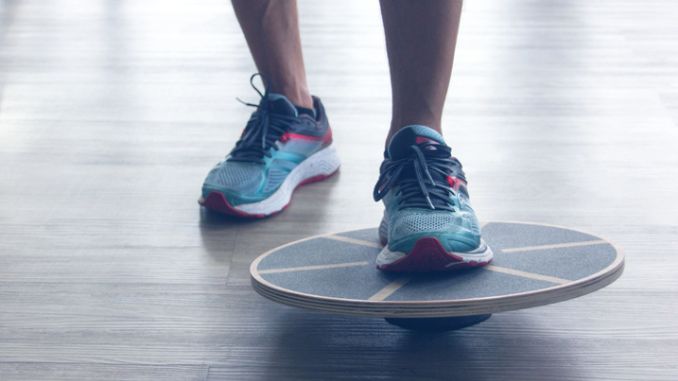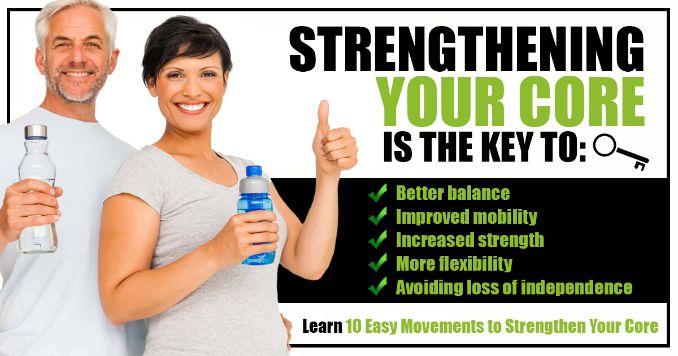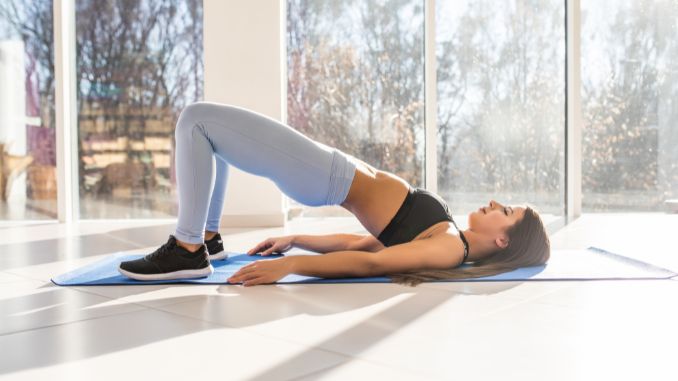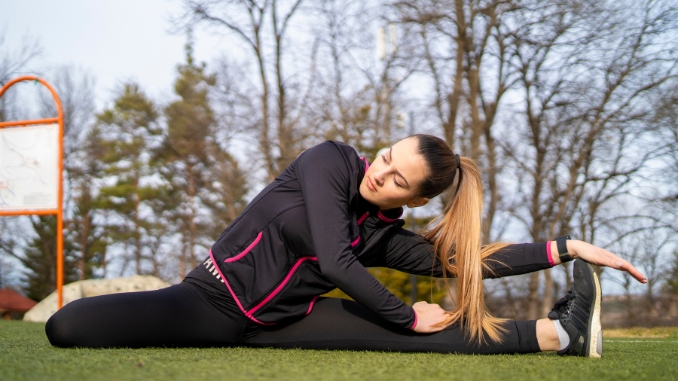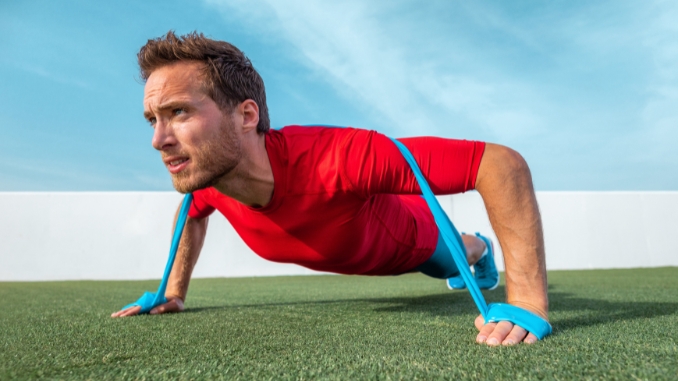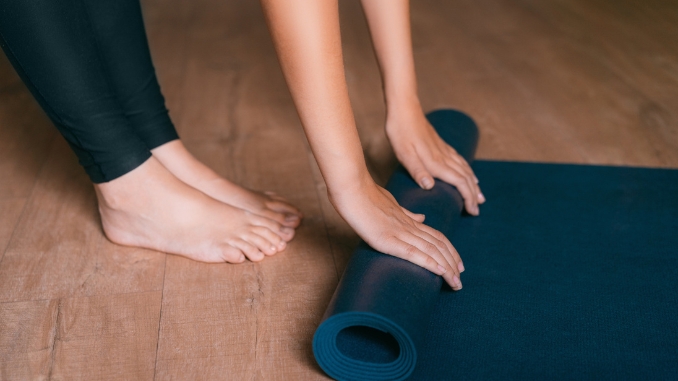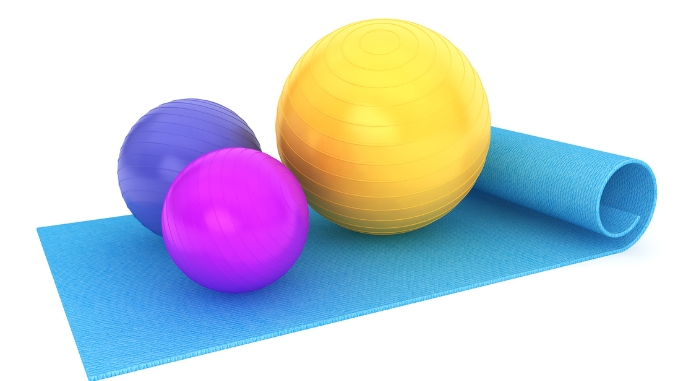Are you looking to take your core strength to the next level? Wobble board exercises can be your secret weapon. These simple yet powerful exercises can help you enhance your stability, refine your balance, and sculpt your core muscles.
What Is A Wobble Board?
A wobble board is a balance tool that improves core strength, balance, coordination, and body awareness. It's a flat surface with a rounded bottom that tilts, challenging users to maintain balance and engage core muscles.
1. Diameter: Most wobble boards are 14 to 20 inches wide, giving enough foot space and a balance challenge.
2. Height: A wobble board's edge is typically 3 to 4 inches (7.5 to 10 cm) off the ground, affecting its tilt range and difficulty.
3. Tilt Angle: The board's maximum tilt angle, usually 10 to 15 degrees, affects difficulty—the greater the tilt, the harder the balance exercise.
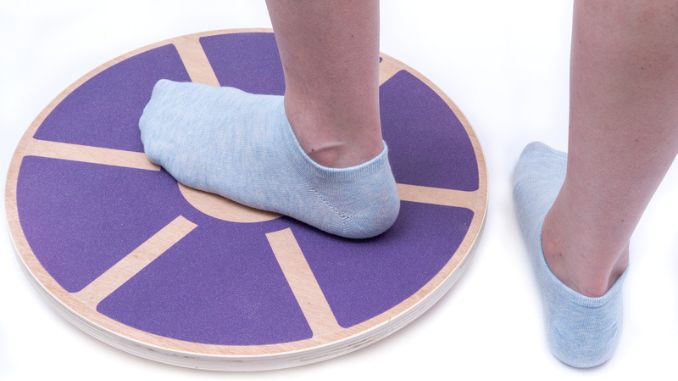
Wobble boards, made from wood, plastic, or composites, sometimes have adjustable bases for varying difficulty. They're used in physiotherapy, gyms, sports training, and homes for balance and core strength training.
Which Muscle Groups Are Targeted By Wobble Board Exercises?
A wobble board targets various muscles, especially in the core and lower body.
Here are the main muscle groups it works:
Benefits Of Incorporating Wobble Board Exercises Into Your Fitness Routine
Adding balance board exercises to your fitness routine boosts your overall health and performance.
Here’s how these workouts can help:
Improved Balance
Balance board exercises improve your balance and stability. Regular use trains your body to stay steady, boosting coordination and body awareness.
Enhanced Core Strength
Balance board exercises work your core muscles, like the abs, obliques, and lower back, strengthening them for better movement and stability.
Injury Prevention
Balancing on a board strengthens muscles, tendons, and ligaments around joints, cutting injury risk. Better balance means fewer falls and injuries.
Versatility In Workouts
Wobble board exercises add challenge and fun to workouts like squats, planks, and push-ups by increasing instability and intensity.
Rehabilitation Benefits
Balance board exercises are great for gentle rehab of lower-body injuries, improving strength and stability safely.
Boosted Athletic Performance
Athletes can benefit significantly from balance board training, as it improves agility, reaction times, and coordination, all of which are essential for high-performance sports.
Increased Muscle Engagement
When you exercise on an unstable surface like a wobble board, your body uses more muscles to stay balanced, making your workout more intense and effective.
Better Posture
Doing balance board exercises often can improve your posture. By strengthening your core and enhancing your balance, these exercises help align your body properly, which eases the stress on your back and shoulders.
Mental Focus
Balancing on a wobble board requires concentration and mental focus, which can help improve your cognitive functions and enhance your ability to focus in other areas of life.
Convenience
Balance boards are relatively small and portable, making them an excellent tool for home workouts or bringing along to the gym. They allow you to add variety to your exercises wherever you are.
How Wobble Board Exercises Improve Core Strength
Your core muscles are essential for maintaining stability and proper alignment during physical activities. Wobble board exercises specifically target your core muscles, including your abdominal muscles, obliques, and lower back muscles.
By performing exercises on a wobble board, you engage these muscles to a greater extent, improving core strength and stability. The plank is one of the most effective wobble board exercises for core strength.
Wobble Board Exercises For Balance And Stability
Balance and stability are crucial for any physical activity, from walking to sports performance. Wobble board exercises can significantly improve these aspects of your fitness.
By challenging your balance on an unstable surface, you train your body to adapt and react to different movements and positions.
A study in "BMC Musculoskeletal Disorders [¹]" by Taghavi Asl et al. examined whether wobble board training (WBT) could improve balance, ankle proprioception, and landing mechanics in men with ankle problems.
Over five weeks, 21 men were divided into groups; one combined WBT with cognitive tasks, another did only WBT, and a third had no specific training.
Results showed that WBT effectively enhanced balance and ankle awareness, but adding cognitive exercises didn't significantly boost outcomes.
Wobble Board Exercises For Injury Prevention
Injuries in sports can hinder performance and cause long-term issues. Wobble board exercises provide a preventive and rehabilitative solution by enhancing stability and strength, reducing injury risks.
This training involves an unstable surface that activates multiple muscle groups, improving balance and coordination for sports movements.
A study by Abed Taghavi Asl et al. [²] highlights that wobble board training effectively improves balance and can reduce ankle sprain risks by up to 50%.
Regularly incorporating these exercises into training routines can significantly boost an athlete's resilience and resistance to injuries.
5 Easy And Effective Wobble Board Exercises
By following these steps, you can select a wobble board that complements your fitness level and helps you achieve your balance and core strength goals effectively and safely.
Important: Before starting any of the following exercises, make sure to place
the wobble board on a flat, non-slip surface.
1. Wobble Board Planks
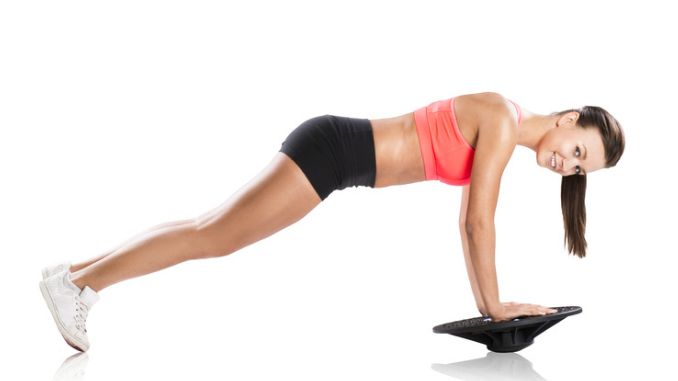
Begin in an upright standing position with your feet hip-width apart in front of the wobble board, maintaining good alignment with your head, shoulders, and hips. Step forward with one foot and hinge through your hips to bend your upper body forward.
Place your hands on the outer edges of the board as you extend your legs behind your back, coming into a high plank position. Engage your core, keeping the board as level as possible.
Hold this position for several deep belly breaths, in through your nose and out through your mouth. Relax and return to the starting position. Repeat the movement.
2. Wobble Board Squats
Begin in an upright standing position with your feet hip-width apart, maintaining good alignment with your head, shoulders, hips, and legs. Step onto the center or outer edges of the wobble board and find your balance. Engage your core.
Slowly bend your knees and hinge through your hips to lower your seat into a squat position, bringing your arms out in front of you for balance.
Depending on your comfort level, aim for a 45° to 90° angle in your knees. Hold this position for a few seconds, then rise back up to an upright standing position, squeezing your glutes at the top position. Repeat the movement.
Important: As you squat, keep the wobble board level without letting the
edges touch the ground.
3. Single-Leg Balance
For this exercise, use the wall or a table for balance.
Begin in an upright standing position with your feet shoulder-width apart, maintaining good alignment with your head, shoulders and hips. Stand on the center of the wobble board with one leg, bending your opposite knee.
Place one hand on the wall or table for balance as you bring your gaze forward and straighten your back. Hold this position for several deep belly breaths, in through your nose and out through your mouth.
Relax, carefully step off the board, and repeat the exercise on the opposite leg.
4. Wobble Board Lunges
Begin in an upright standing position with your feet hip-width apart and a short distance from the board, maintaining good alignment with your head, shoulders, and hips. Step forward with one foot on the center of the wobble board and take a big step back with the other leg.
Engage your core and lower your back knee towards the floor, keeping your toes pointing straight ahead. Step back up to an upright standing position and repeat the movement on the opposite side. Start with 1 set of 12 repetitions on each side.
This exercise makes your legs and belly muscles strong and helps you balance better.
Important: As you lunge, focus on keeping the wobble board level. This will engage your core and the stabilizing muscles around your ankles and knees. Make sure your front knee is above your ankle and keep your body straight
and tighten your belly.
5. Wobble Board Push-Ups

Begin in an upright standing position with your feet hip-width apart in front of the wobble board, maintaining good alignment with your head, shoulders, and hips. Step forward with one foot and hinge through your hips to bend your upper body forward.
Place your hands on the outer edges of the board as you extend your legs behind your back, coming into a straight arm plank position. Engage your core. Inhale, lower your upper body towards the board, keeping your elbows bent, ideally at 90 degrees, then exhale as you push back up to the starting position.
Repeat the movement for several repetitions, focusing on keeping the wobble board stable and your upper body rigid.
This exercise challenges your chest, arms, and core muscles more than a regular push-up due to the instability of the board, enhancing your strength and balance.
Conclusion
Wobble board exercises are a fun way to boost stability, balance, and core strength. Suitable for all fitness levels, they add challenge by creating instability, forcing your muscles to work harder.
This improves strength, coordination, prevents injuries, and enhances athletic performance.
Are you ready to build a stronger core and improve your overall fitness? Look no further! Dive into our guide on 10 Easy Movements For A Stronger Core and take the first step towards a healthier, fitter you.
Frequently Asked Questions
Is wobble board exercise safe?
Wobble board exercises are safe for most people and improve balance, strength, and coordination. If you're new to exercise, have balance problems, or certain health issues, check with a doctor first. Start slowly, use the board in a clear area, and listen to your body to avoid injuries.
Do exercise wobble boards work?
Exercise wobble boards are great for im surface that makes your muscles work harder to keep you balanced. Regular use can enhance fitness, reduce injury risk, improve posture, boost sports performance, and stabilize everydaproving balance, core strength, coordination, and body awareness. They create an unstabley movements.
Do you lose weight on a wobble board?
A wobble board alone won't lead to big weight loss but helps in a full fitness plan. It improves core strength and balance but burns fewer calories than intense workouts. Used with aerobic exercises, strength training, and a healthy diet, it can support muscle toning and weight loss efforts. Consistency and mindful eating are key.

